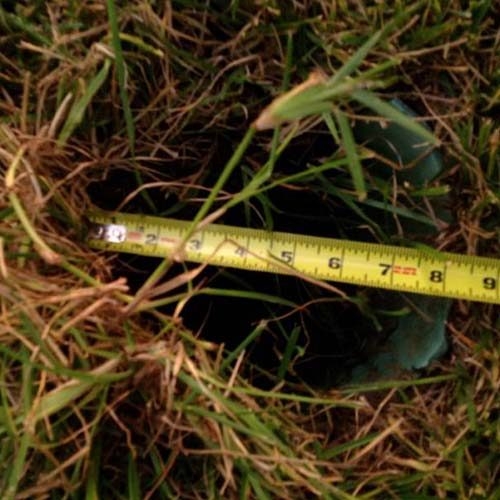
$800,000 Settlement
Broken Pipe Creates Unseen "Trap"
Premises Liability
A local retailer built a store on a lot that was originally planned for office complexes. Because the lot was much larger than the retailer needed, the retailer developed a portion of the property as a park-like, green space. Knowing their customers, local residents, employees of neighboring businesses, and others would frequently walk through this green space, the retailer kept the area mowed and well landscaped. The retailer trained its managers and employees that the green space must be part of their daily safety inspection to insure no hazardous conditions existed on the property. This was to protect anyone and everyone who may walk in the area.
Our client was an employee of one of the neighboring offices. This day she decided to leave work and do some shopping at another of the local retail stores within walking distance. Our client walked through the green space when suddenly her leg collapsed four (4) feet deep into a broken pipe. The opening of the pipe measure eight (8) inches across and was jagged and sharp. This opening was the same size opening that famously trapped “Baby Jessica” in 1987.
The retailer claimed it never knew the pipe was broken. The retailer pointed to their daily safety inspections as evidence that they never had sufficient notice of the broken pipe. However, the attorneys at BEALL & THIES were able to use date stamped Google Street View photographs to prove the pipe had been broken for over two years. These Google photos proved the managers were not conducting proper safety inspections of the property – – or were not conducting them at all.
During the fall, out client suffered deep cuts into her leg requiring sutures. The site of the wound developed a rare, but very painful neurological condition called Complex Regional Pain Disorder (CRPD). CRPD causes the body to physically respond to a mild or moderate injury, as if it were severe in nature ( ie amputation, 3rd degree burn, etc). Treatment of this condition is long term and not always successful. This recovery allowed our client to receive the long term medical care she required.
Our client was an employee of one of the neighboring offices. This day she decided to leave work and do some shopping at another of the local retail stores within walking distance. Our client walked through the green space when suddenly her leg collapsed four (4) feet deep into a broken pipe. The opening of the pipe measure eight (8) inches across and was jagged and sharp. This opening was the same size opening that famously trapped “Baby Jessica” in 1987.
The retailer claimed it never knew the pipe was broken. The retailer pointed to their daily safety inspections as evidence that they never had sufficient notice of the broken pipe. However, the attorneys at BEALL & THIES were able to use date stamped Google Street View photographs to prove the pipe had been broken for over two years. These Google photos proved the managers were not conducting proper safety inspections of the property – – or were not conducting them at all.
During the fall, out client suffered deep cuts into her leg requiring sutures. The site of the wound developed a rare, but very painful neurological condition called Complex Regional Pain Disorder (CRPD). CRPD causes the body to physically respond to a mild or moderate injury, as if it were severe in nature ( ie amputation, 3rd degree burn, etc). Treatment of this condition is long term and not always successful. This recovery allowed our client to receive the long term medical care she required.